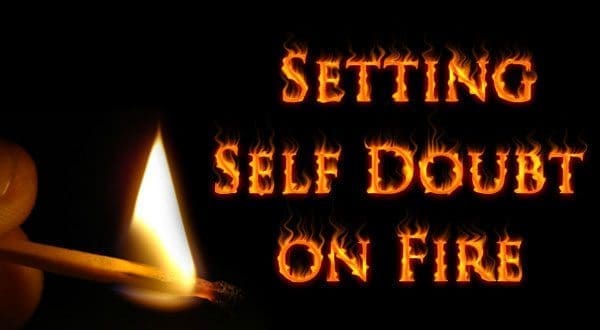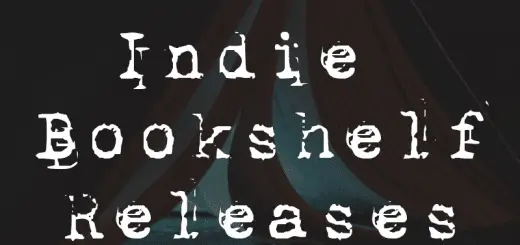Setting Self Doubt on Fire: Rejection – The Ugly Word

I’m back and I hope you all have your boxing gloves ready because it’s time for round one (Ding! Ding!). To start this fight I’m going to start with Mr Self Doubt’s favourite pal, yes we will be facing REJECTION.
Rejection is possibly a writer’s worst nightmare; it’s definitely mine. It can be like a Mike Tyson’s blow to the gut when it comes knocking on your door. However, while rejection is a painful experience it’s one we, as writers, have to learn to defend ourselves against. Without that defense this bullet can possibly kill your writer’s dream.
So how exactly can we defend ourselves? Firstly, we need to understand the reasons for rejection, and this may come as a surprise, but a rejection doesn’t necessarily mean your story is rubbish. To help you believe me (I bet Mr Self Doubt is whispering in your ears now) I’ve listed some of these reasons.
- It’s not the editor’s cup of tea (personal preference): A lot of the time your story will be read by one person, and we all know not everyone likes the same thing; we are all individuals after all. So on some occasions a story rejection is just down to personal preference. So before you submit a story try to see what has been published before, this will give you a clue to what kinds of stories the editor likes, I say editor it could be anyone who reads the story. Many submission calls do go into detail about what they DO and DO NOT want, so pay close attention to that. I like to remind myself that sometimes it’s just a case of finding the right home for your story.
- You just needed another edit: I find when I read a story I’m automatically drawn to any spelling or grammar mistakes (I wish I had this skill with my writing), and this too will be the case when others read yours. It can be frustrating that even after several edits you still miss a little something, but before you throw your rejected story away just give it another once over, then resubmit it.
- Too many stories not enough space: There’s so many of us (writers) out there submitting stories and a lot of the time there’s only a limited amount of space. So rather than your story being rubbish consider the fact that hundreds of stories might be submitted for 3 spaces, add that with your story being one of the last ones submitted, and you get rejection. “First come first served.” as the saying goes. This is why it is imperative that you create a story that not only stands out of the crowd, but leaps out, and sets off party poppers.
- Story isn’t suitable for the readers: This links to point one in a way because even though you submit to a horror publisher it doesn’t mean that your story will always be suitable. For example, you have a story that has people being brutally murdered, you describe it all, you know the sort of stuff that could seriously traumatize a person, and you send it to a publisher that has a young audience. That story will not be published no matter how good it is. So as I have stated above always make sure you are sending your stories to the right places.
So there you have some reasons for rejection there are probably loads more, but for now, that’s my lot. I’m afraid it’s now time to talk about rejection when your story isn’t as good as it can be (not going to say crap this only fuels Mr Self Doubt). I have reread stories, especially my earlier ones and I have to admit they have made me cringe. Does this however mean that you should give up, no it just means that you have some ‘serious’ work to do, and to help you on your way I’ve found 5 reasons your story has been rejected.
- Bad Beginnings: I’ve done this; I’m sure many have. Sometimes you can forget just how important the start of a story is, but without that attention-grabbing opening, you won’t be able to hook your reader. I remember when I started out I would write long descriptive paragraphs where nothing much happened, now with a novel you have more space to hook a reader (not much more probably a page) with a short story you have the first paragraph, well more like the first line. So how do you make sure that you have a killer start? Well firstly, you make sure something is happening; it could be as simple as a boyfriend breaking up with his girlfriend (through dialogue) to someone having their head cut off. Secondly, you need to take off your ‘writer hat’ and put on your ‘reader hat’, you can actually wear hats if this helps. With your ‘reader hat’ on you can now read your story as a reader because after all this is who the story is for. We all know how it feels to get hooked by a story so this is important that you approach your story this way, it’s not easy sometimes the ‘writer hat’ puts itself back on, but you need to stop being in love and start being critical.
- Wordiness: This is where you go crazy with the adverbs and adjectives, and to show off your impressive vocabulary you throw in some unnecessarily big words. I have to admit I’ve done this one too, you see I’m a waffler, but what helped me to cut all that out was trying my hand at flash fiction. By forcing myself to write a whole story under 1000 words, I was able to learn how to cut out the junk and use only the words I need. So if you too tend to go on a bit try flash fiction, it’ll drive you a little crazy but trust me it’ll help.
- Too much back-story: The problem with back-story is that it slows down the pace, readers want action and they only want history if it is relevant to the story. So even though you might know your character’s whole life story it’s not necessary for your readers too. Just imagine sitting with a friend as they tell you everything they ever did from the day they were born to now, not fun right.
- Flat Characters: From all the creative writing courses I’ve done they all say the same thing a story needs characters that a reader cares about. Would I have loved Harry Potter so much if I didn’t care what actually happened to Harry, no I wouldn’t. So we all need to make sure that our stories have characters (at least the main) that are well rounded, have good qualities and flaws, and that grow and develop throughout the story.
- Unoriginal plots: This I also have to admit I have done. Editors and readers are tired of the same old same old; I wrote a vampire flash fiction, which I have only just admitted to myself, was unoriginal. This doesn’t mean that I should give up; it just means there needs to be more thinking outside of the box. We have creative freedom, come on let’s let our imaginations run wild.
Even with all this advice there is still a little problem, we still need to learn how to deal with rejection. I read a funny post while researching for this, it said, “You will get rejected”, which is true it’s part of life in general not just writing. It was then suggested that you frame your rejections or pin them up, there’s a quote from the Stephen King’s book ‘A memoir of the craft’ that I found amusing “The nail in my wall would no longer support the weight of the rejection slips impaled upon it. I replaced the nail with a spike and kept writing.” From this quote alone, I’ve decided to get the book.
As you can see when you do get that rejection you need to still keep going, you will improve, you will get better and if you keep going you will get published just as long as you are prepared to fight for it. To help you on your way I’ve shared with you my dealing with rejection process.
- Allow yourself time to grieve (no longer than day), this normally involves me buying or making myself a treat, man I love that I can bake.
- Put your story aside and work on others
- Reread, re-edit and resubmit
- Never stop writing and never stop submitting, you can’t get published if you don’t submit
On a final note just remember the reasons for rejection isn’t ‘I’m a rubbish writer’, it’s ‘my story needs to find the right home’ or ‘my story needs more work’.
So, what are you waiting for? Go write something. Let’s follow this unrealistic dream!











